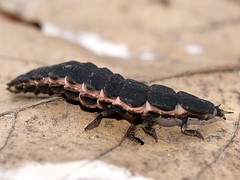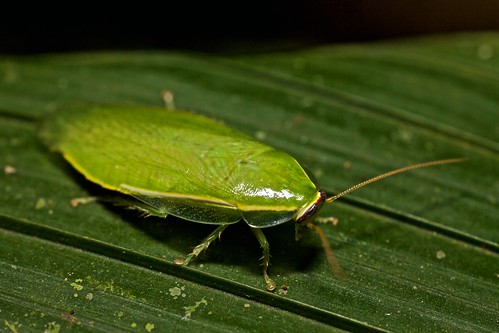Nothing quite expresses the sublime joy of watching fireflies paint the night sky with their glowing tails. Few realize, however, that their beautiful language is for the purpose of mating. Male fireflies take off just after dark, emitting a telegraphic pattern of flashes that can vary in intensity, shape, length, and periodicity. Each species has a unique flash pattern which the female recognizes among all the other flashes as the one belonging to her species. In between pattern repeats, the male waits for the female to respond with her own characteristic flash from her hiding spot in the vegetation. When he catches sight of her come-hither flash, the male circles back, repeating his flash pattern and waiting for her to repeat her response. This way the male and the female firefly call to each other in the dark until they locate each other and consummate their romantic conversation.
 Fireflies are beetles belonging to the family Lampyridae. They spend most of their lives as larvae (glow-worms), living in dark and muddy places and preying on snails. Like moths, their adult lives are short. Like moths, many beetles related to fireflies will use sex pheromones rather than light to attract their mates. The unique bioluminescence of fireflies, however, allows them to wait until dark (when birds and other predators are asleep) to come out to mate. Specific flash patterns make the species immediately identifiable from a long distance at night. The frequency and intensity of light flashes can also communicate information about the male's quality as a mate. These advantageous aspects to light communication has led to the evolution of light-based sexual signals four times in the firefly lineage.
Fireflies are beetles belonging to the family Lampyridae. They spend most of their lives as larvae (glow-worms), living in dark and muddy places and preying on snails. Like moths, their adult lives are short. Like moths, many beetles related to fireflies will use sex pheromones rather than light to attract their mates. The unique bioluminescence of fireflies, however, allows them to wait until dark (when birds and other predators are asleep) to come out to mate. Specific flash patterns make the species immediately identifiable from a long distance at night. The frequency and intensity of light flashes can also communicate information about the male's quality as a mate. These advantageous aspects to light communication has led to the evolution of light-based sexual signals four times in the firefly lineage. The flash dance of fireflies can be exploited, however. If you're skilled with a small pen-light you can trick male fireflies to land on your hand by flashing back at them as a female firefly would. Females of the genus Photuris have also learned to pull this prank on male fireflies. Photuris females will call to males of other firefly species, but not for mating. These femmes fatales are looking for a snack. The male, oblivious to the fact that the female below is not of his own species, flies straight into her welcoming jaws.
Figure of firefly flash patterns by J. E. Lloyd, University of Florida from Fireflier Companion (1998) 1(4): 56.
Image of Photuris female munching on male also by J. E. Lloyd.





